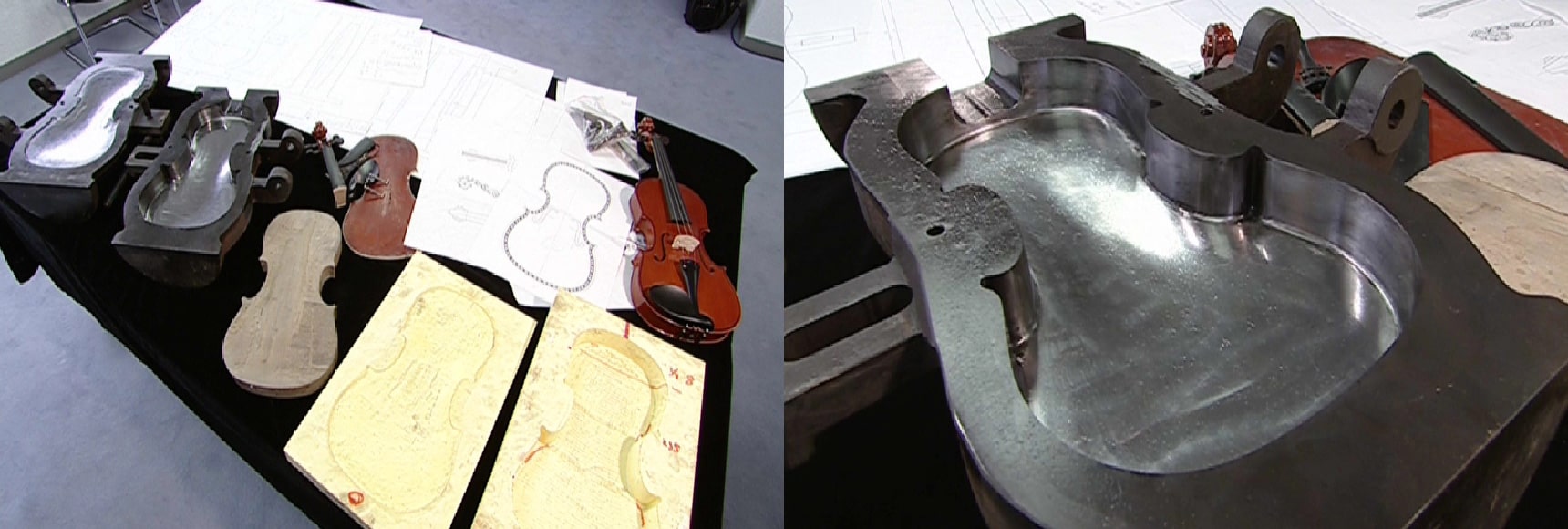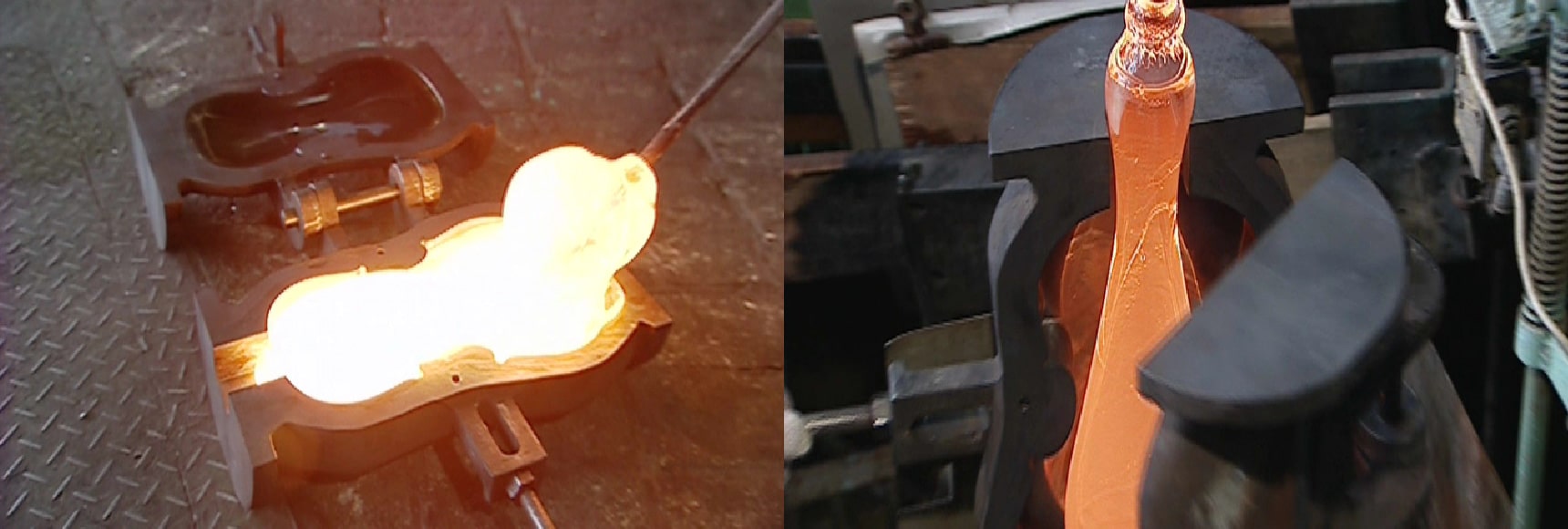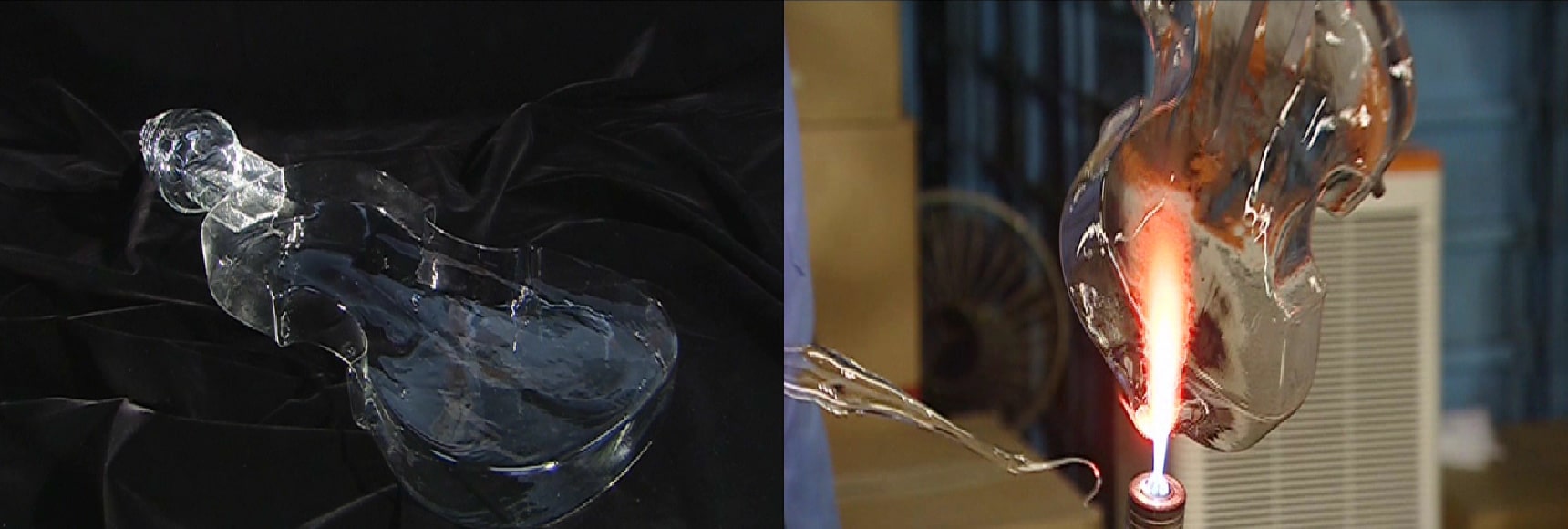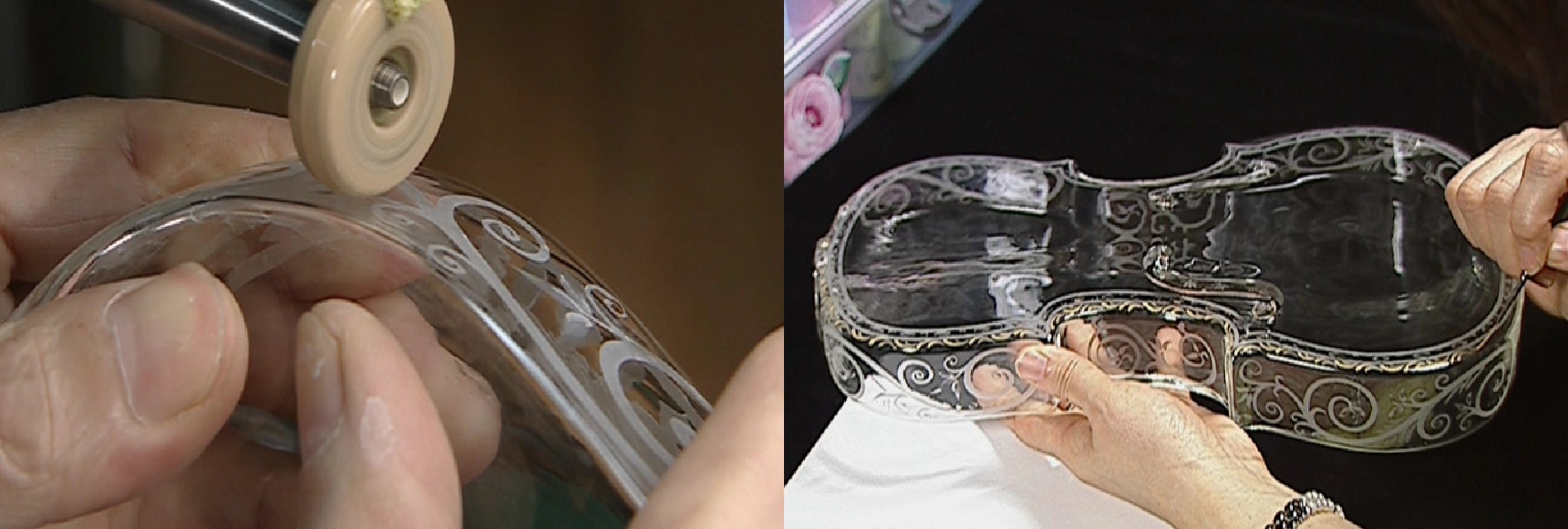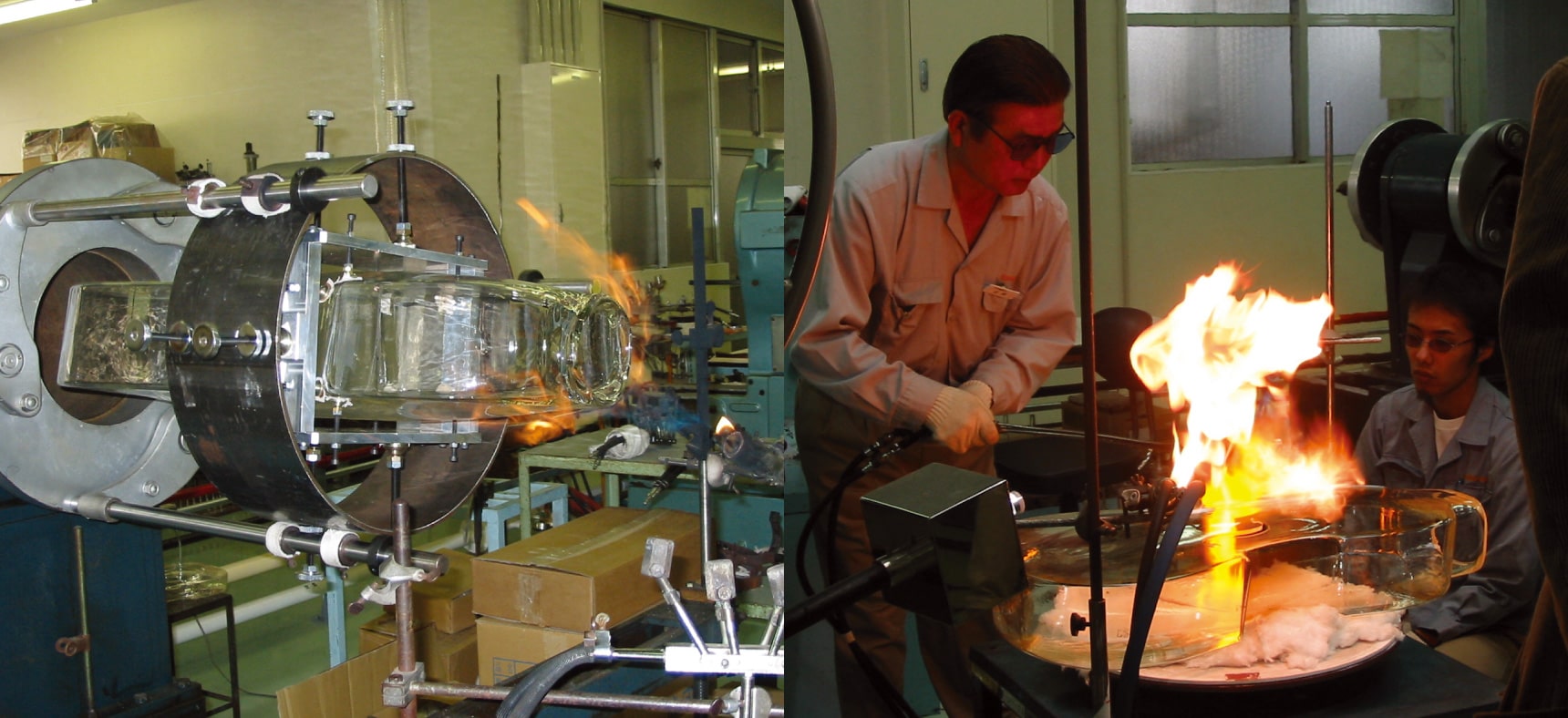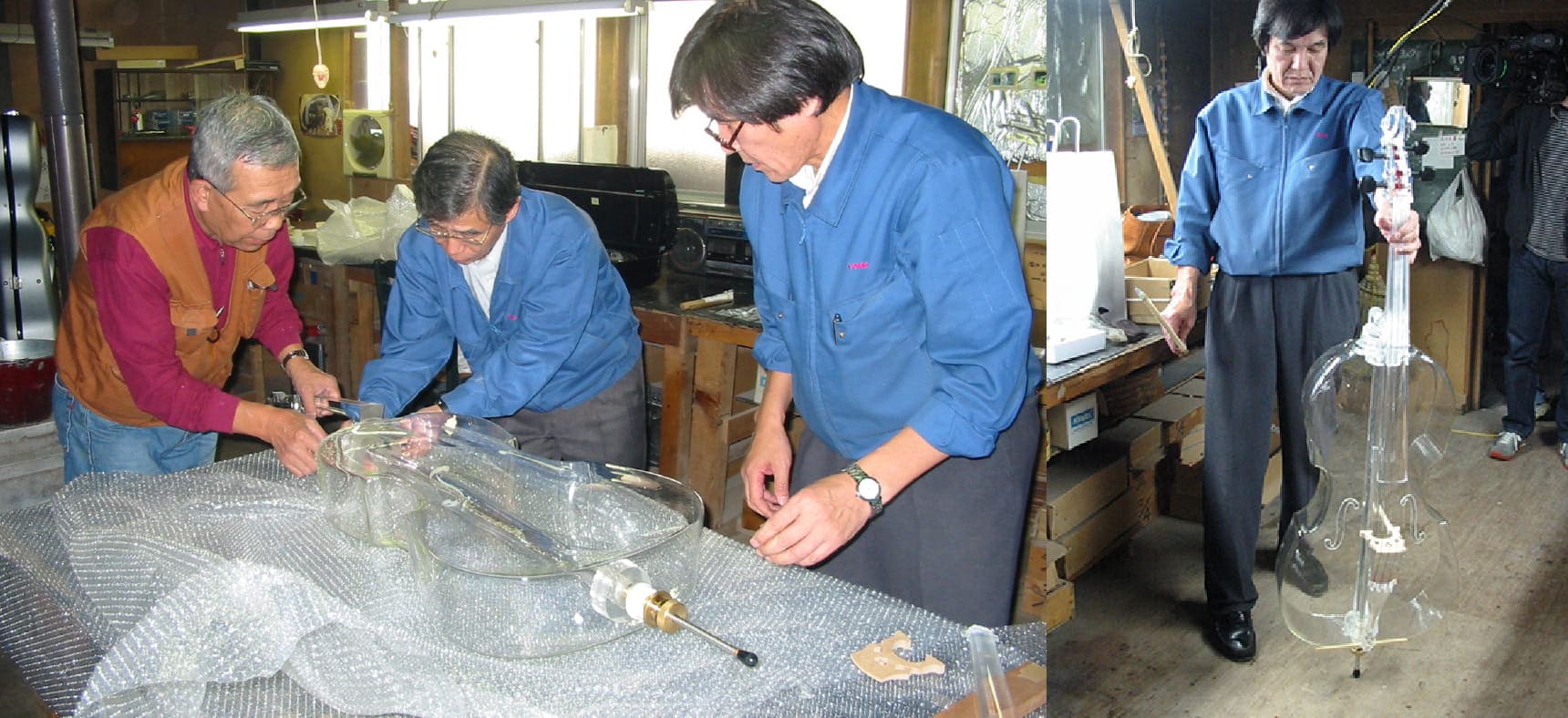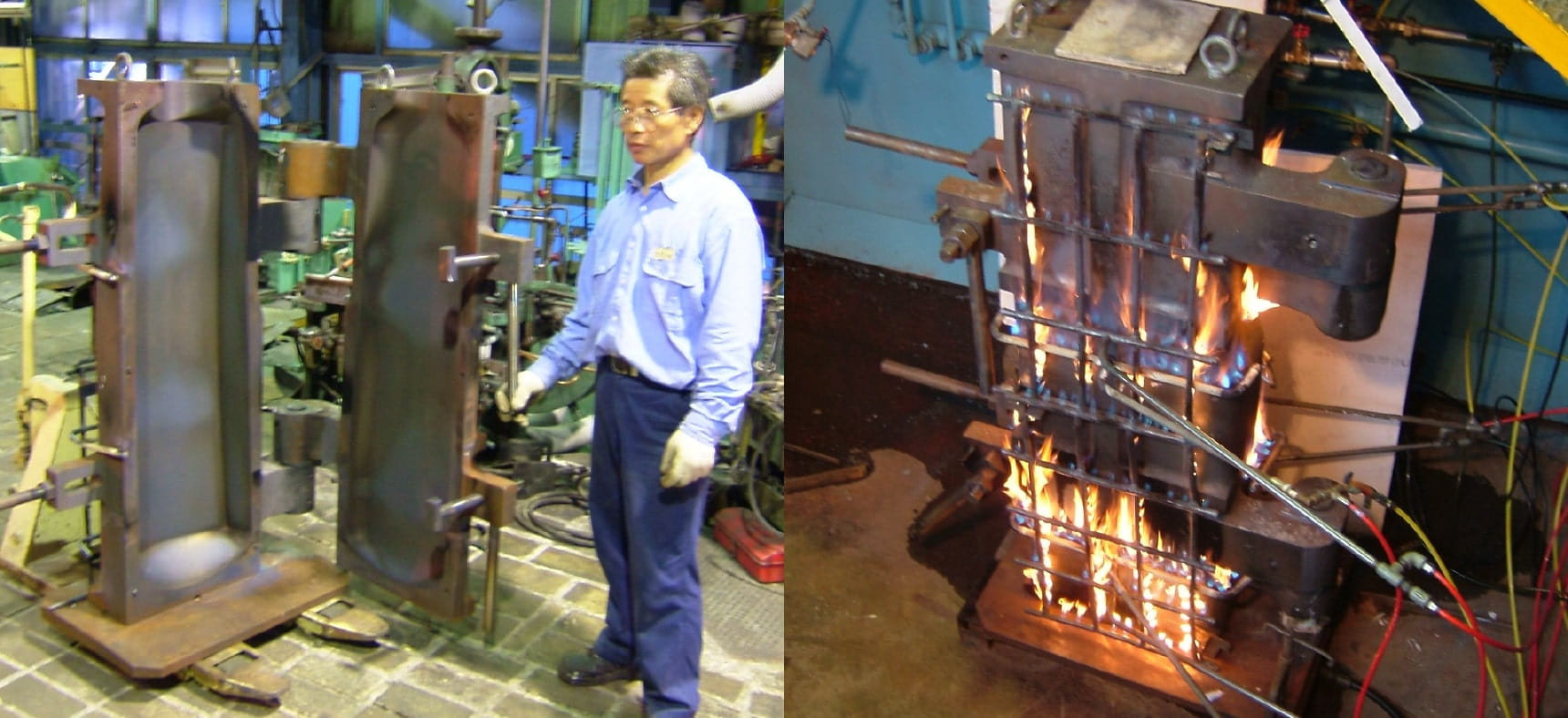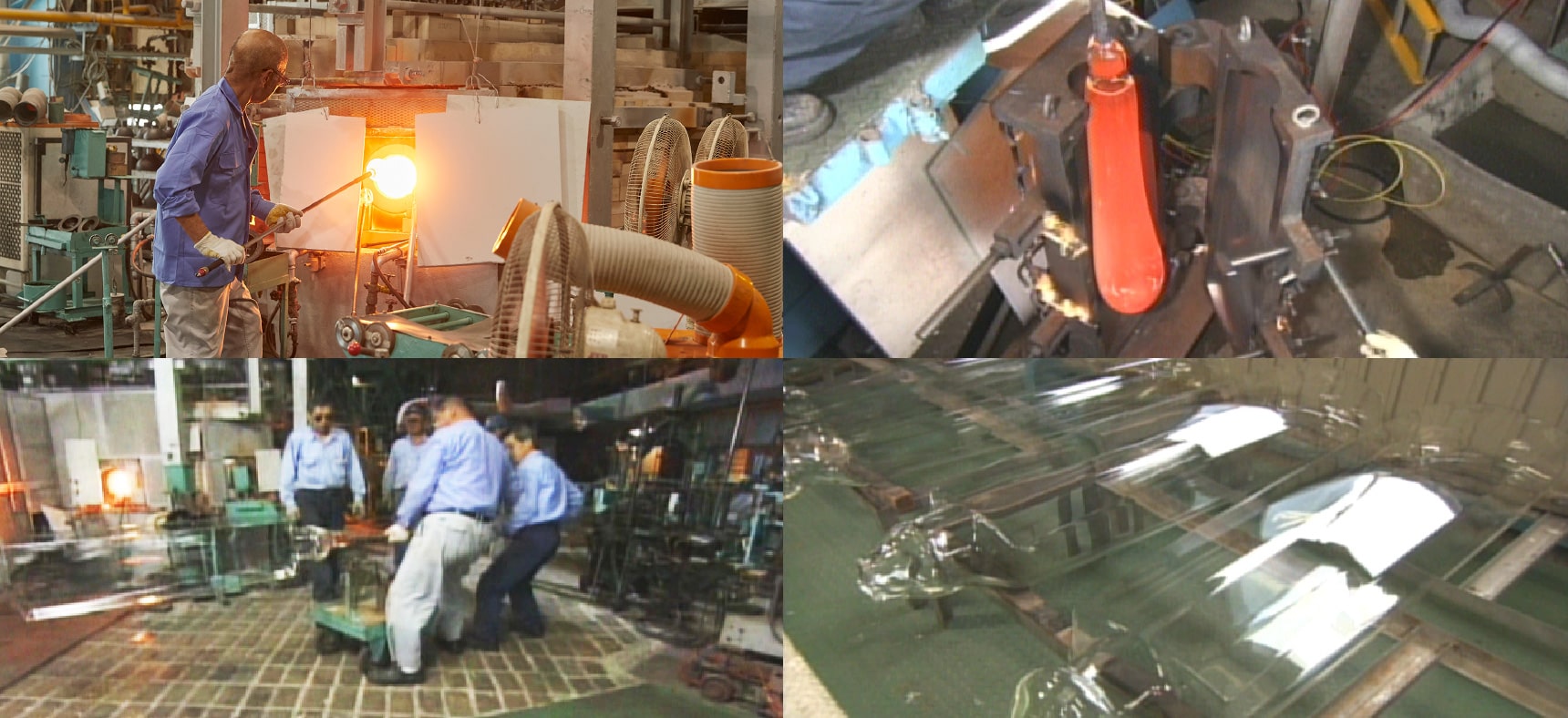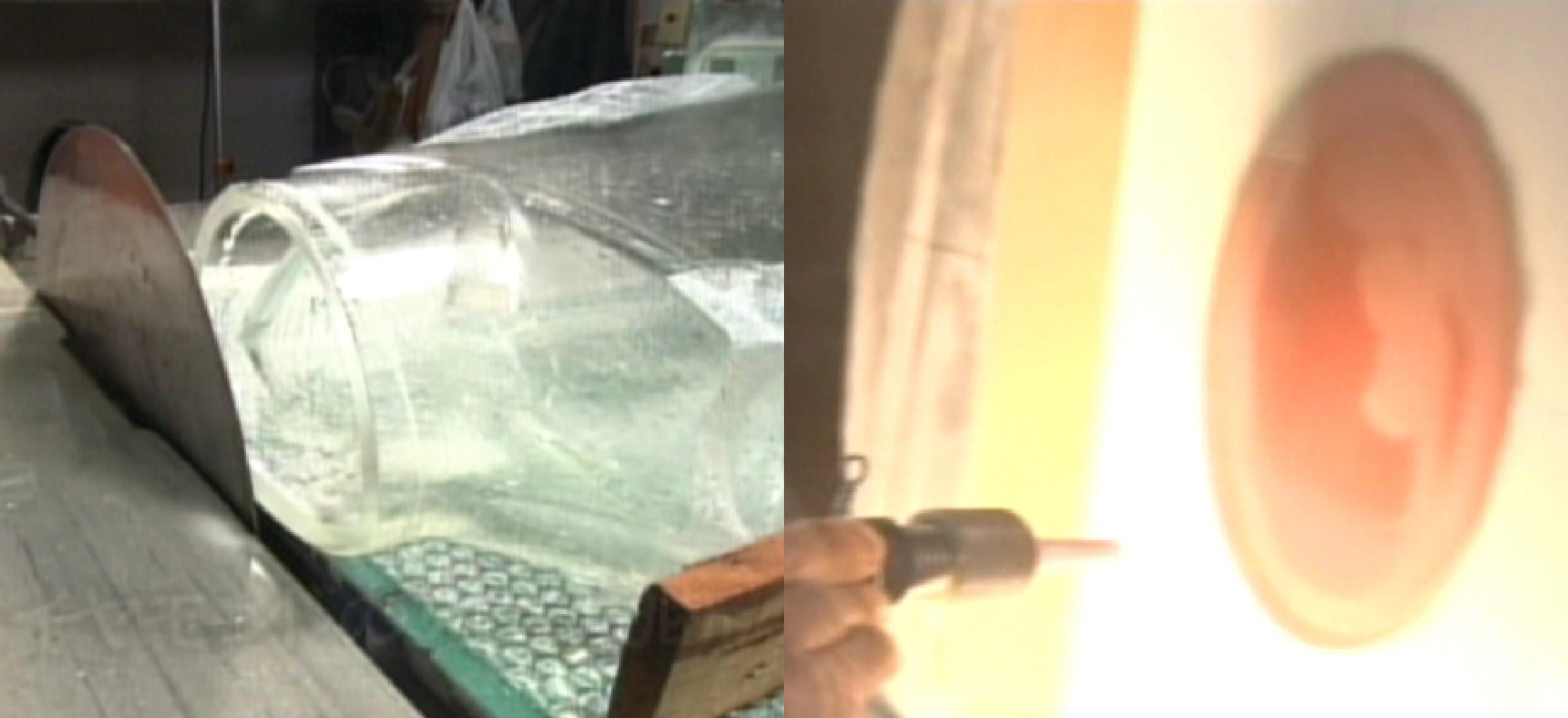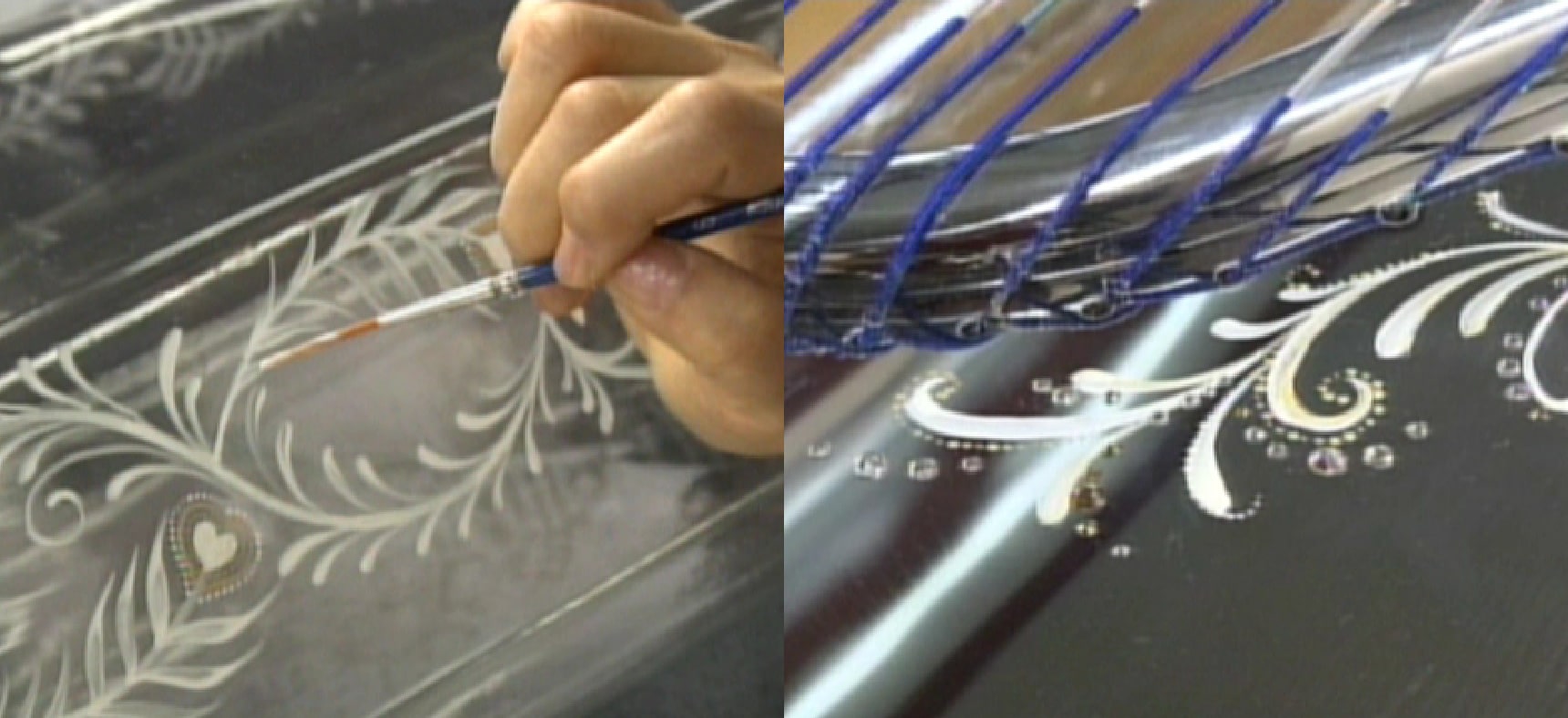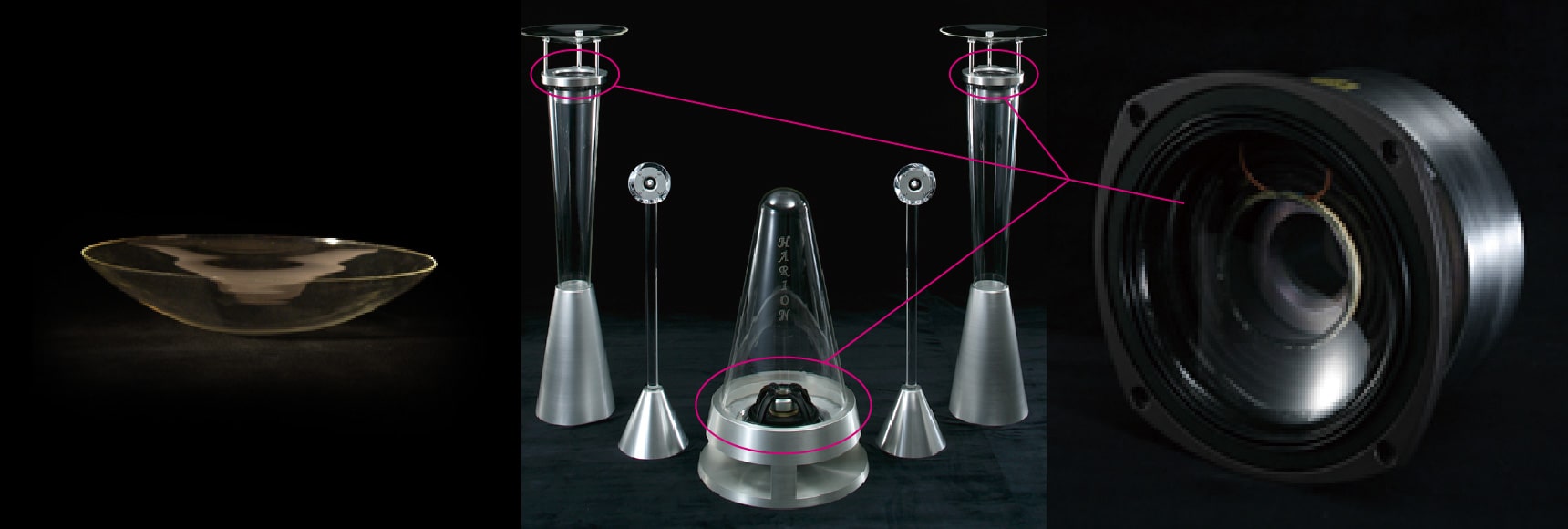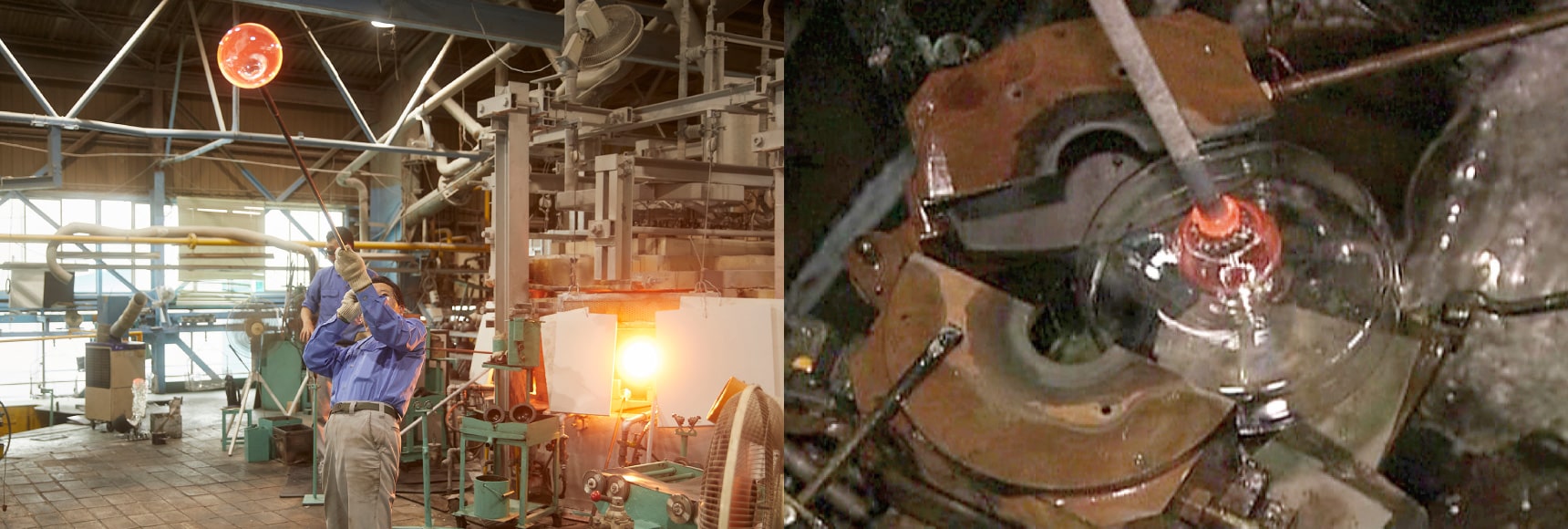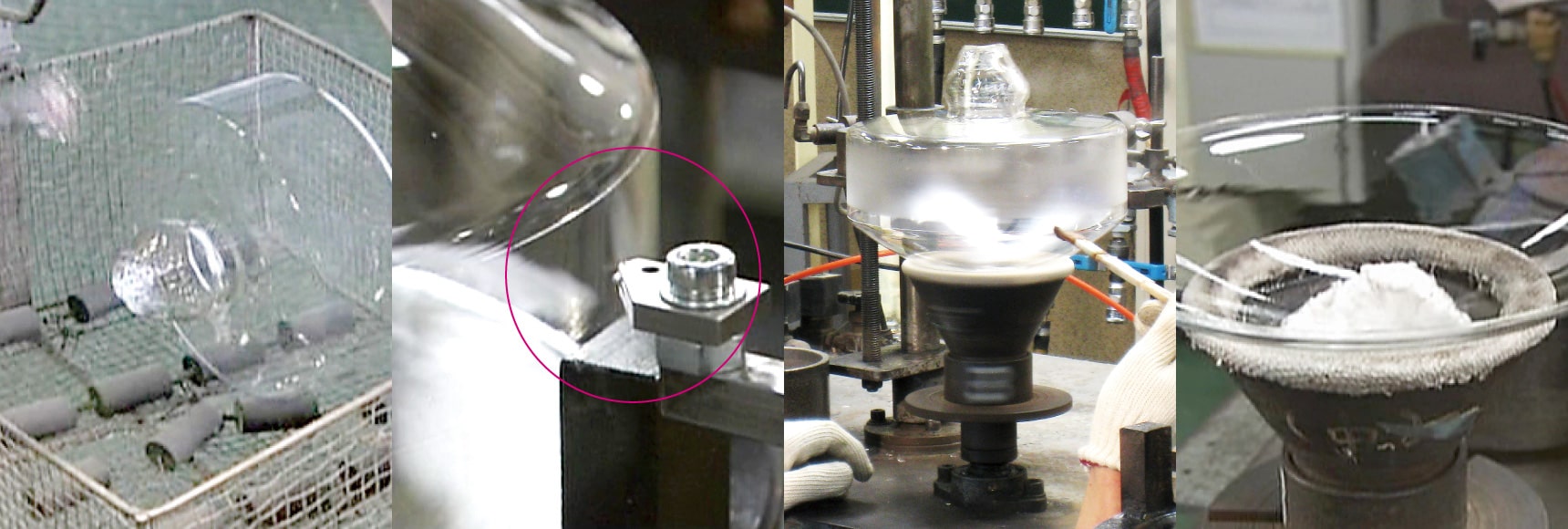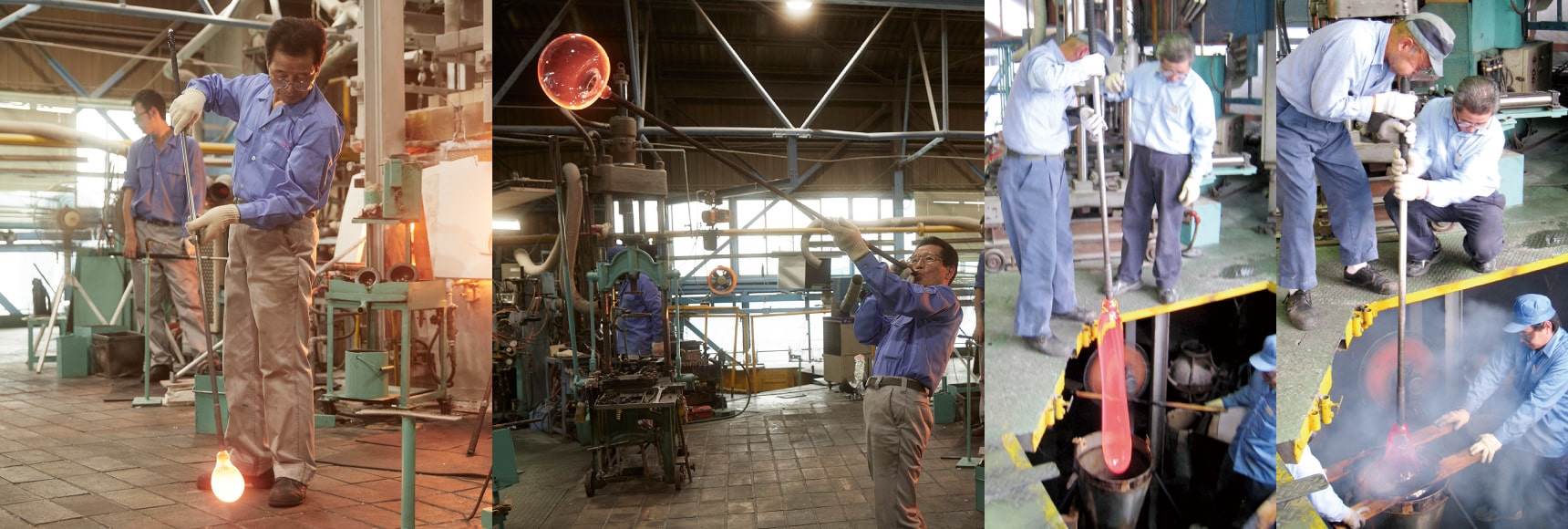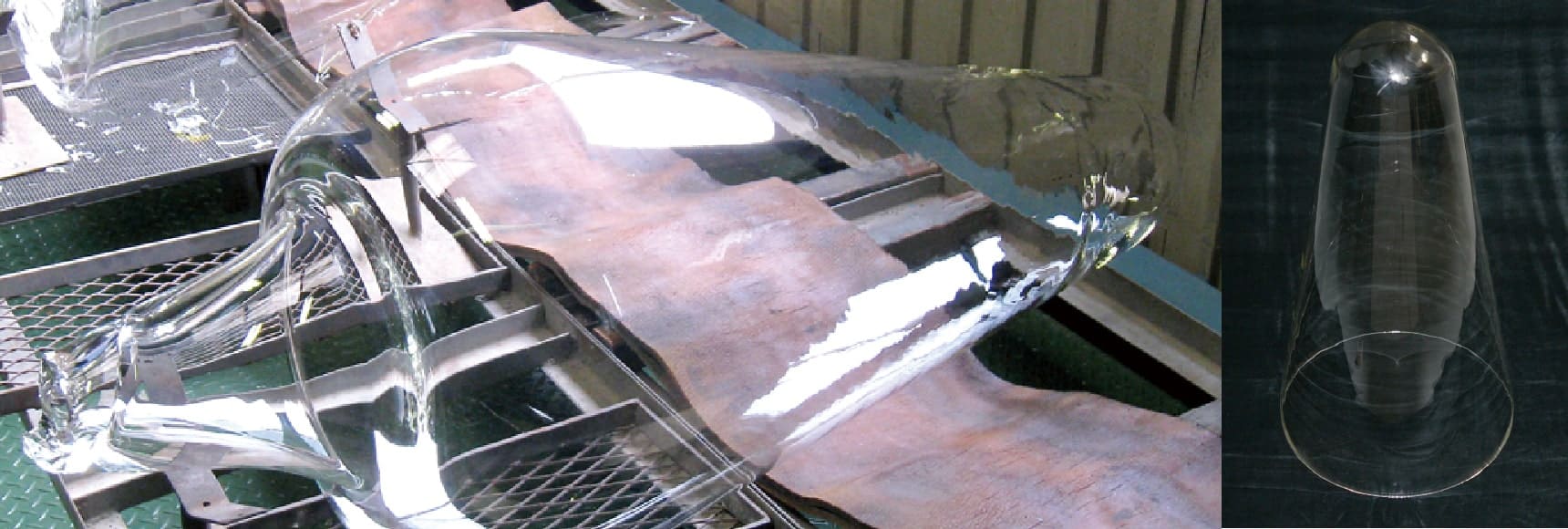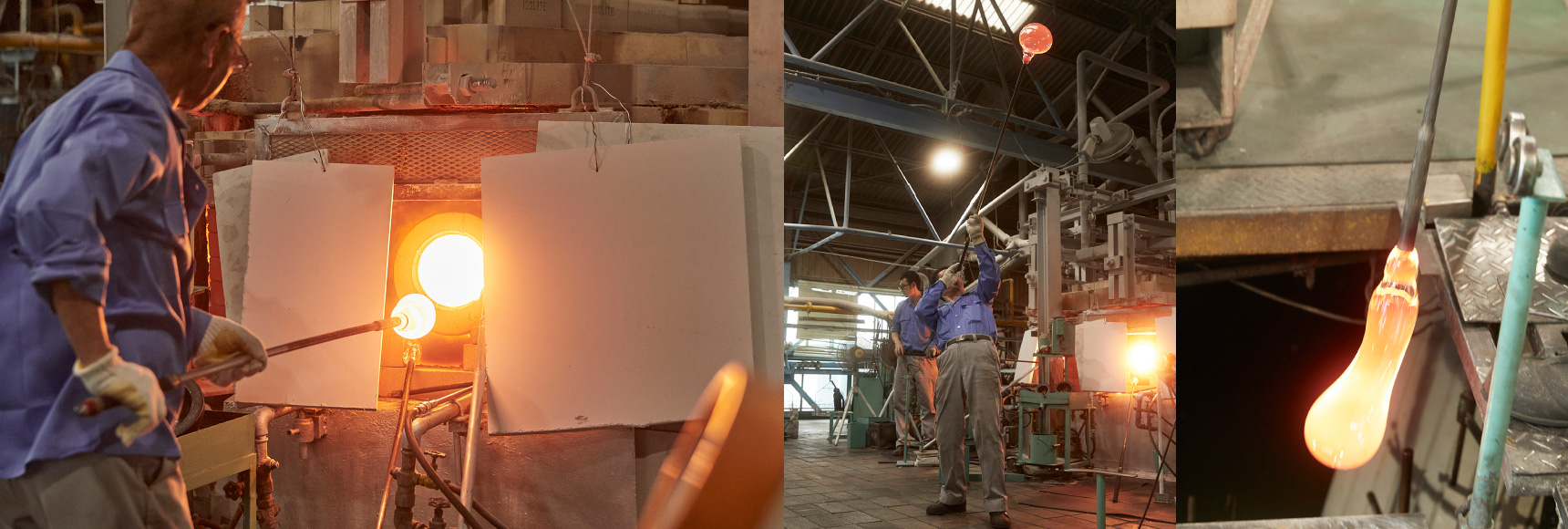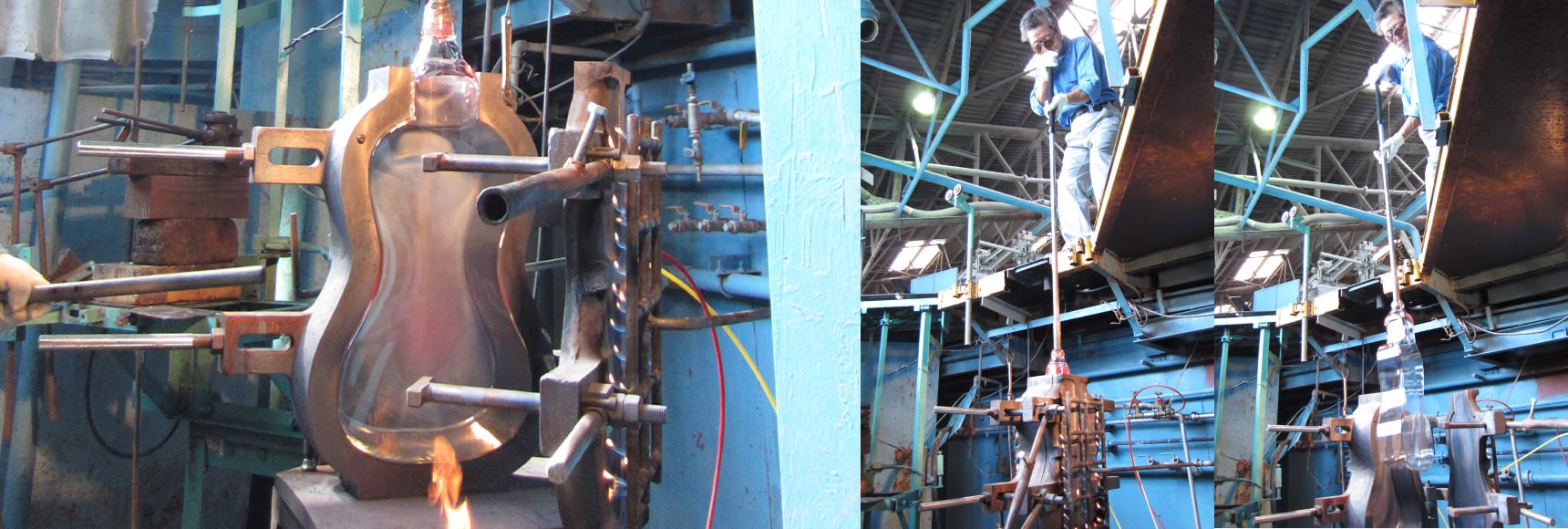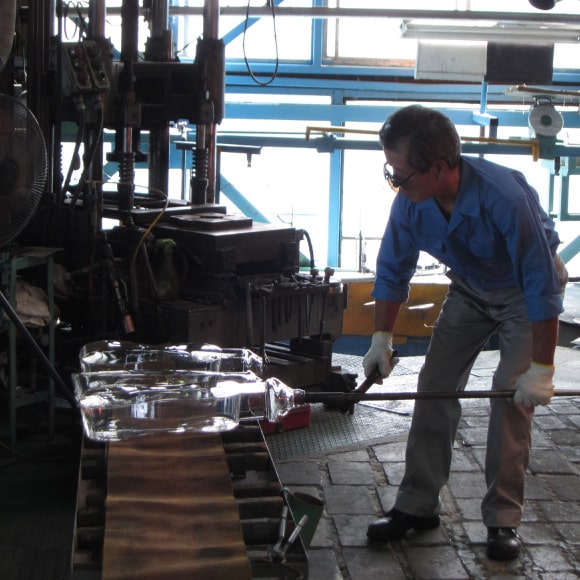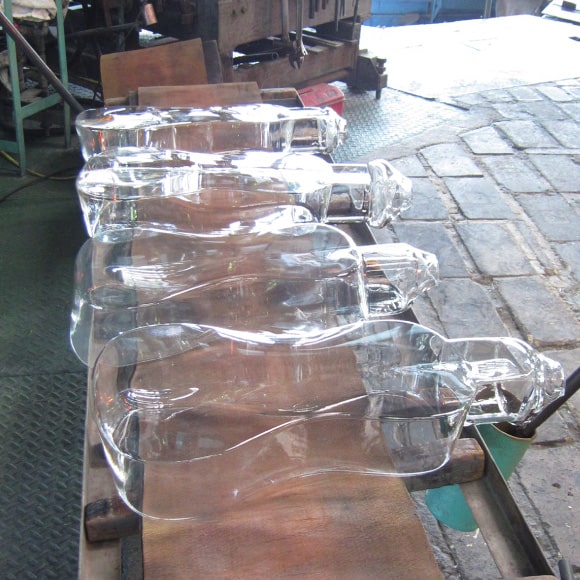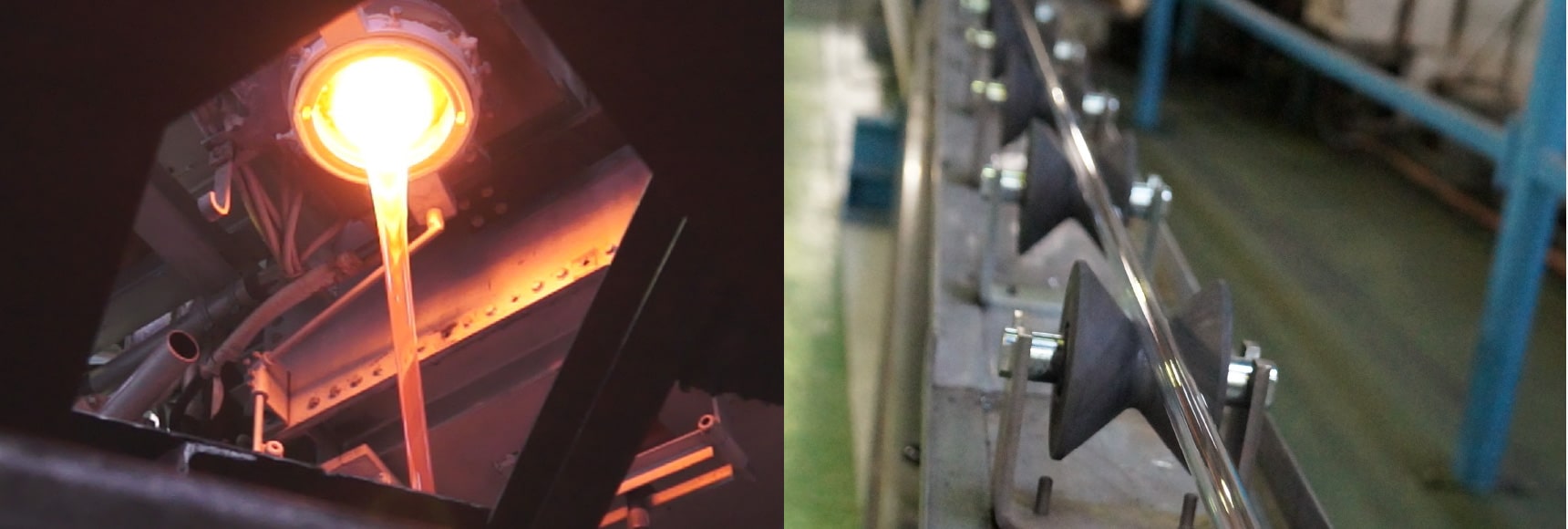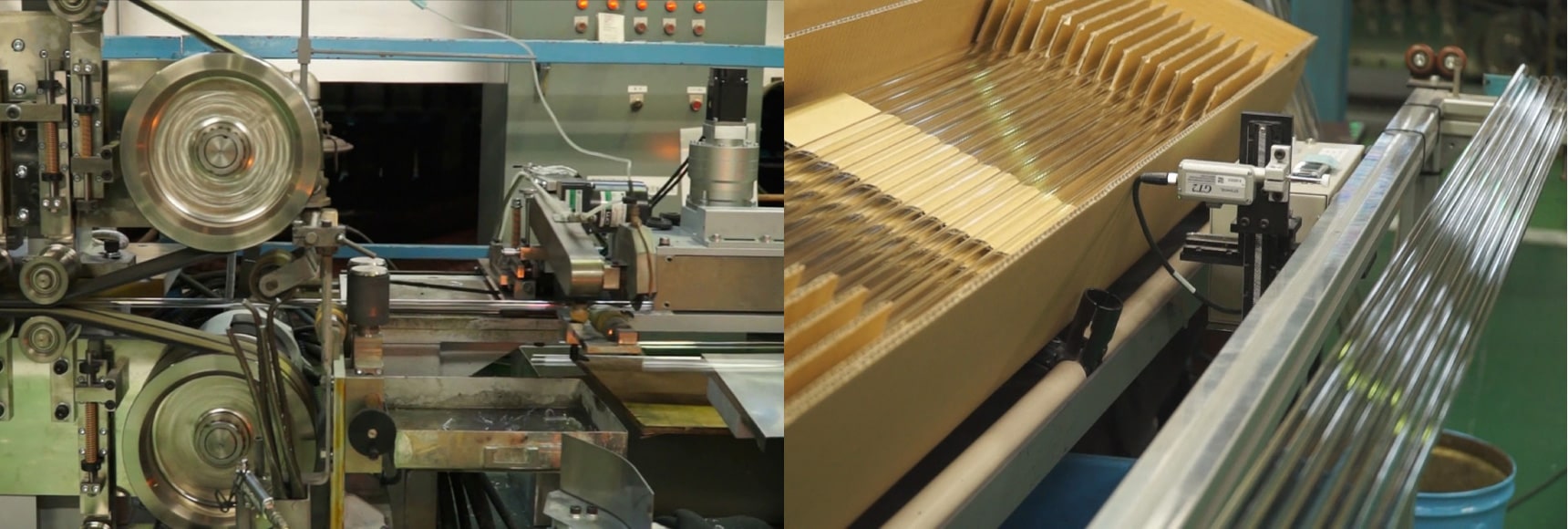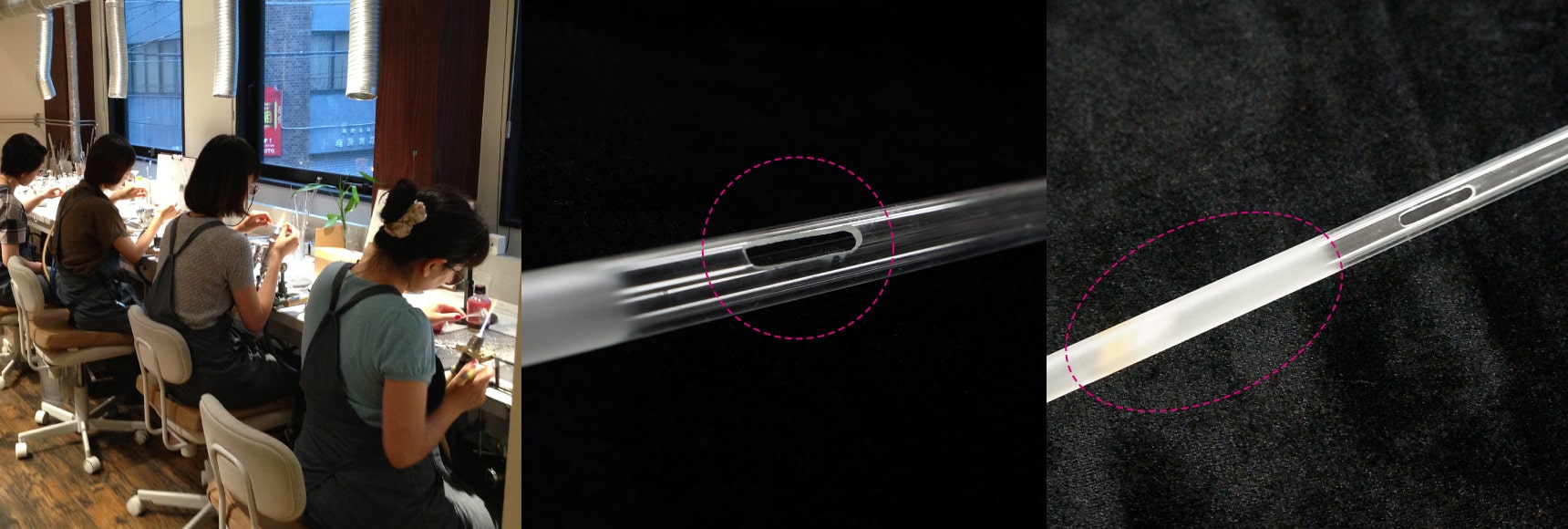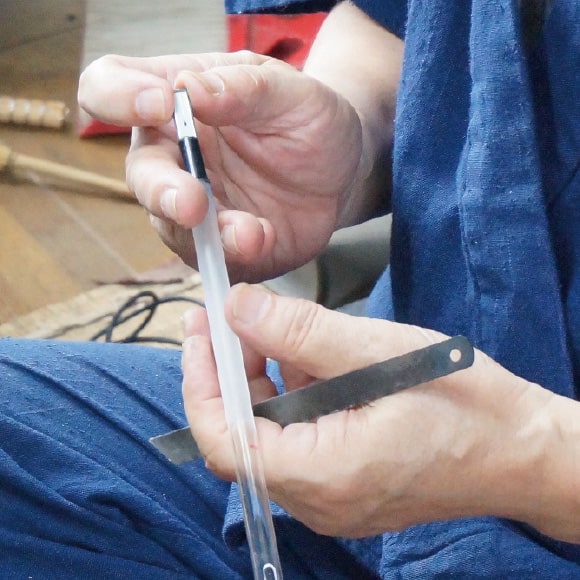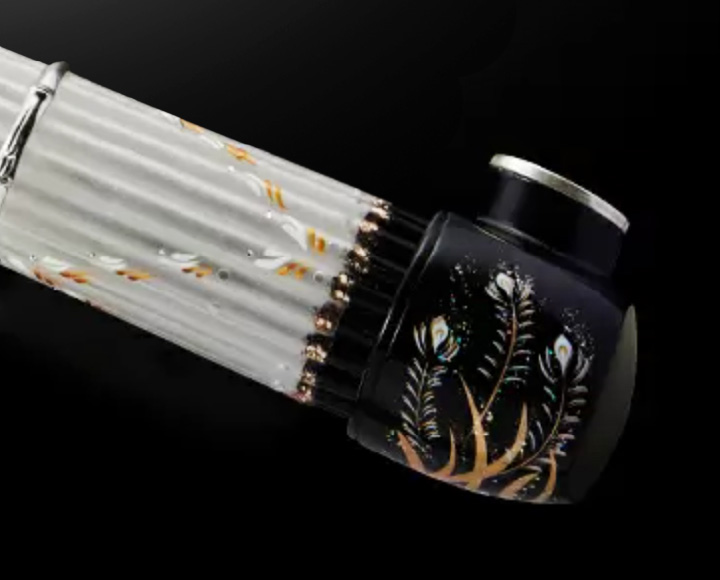
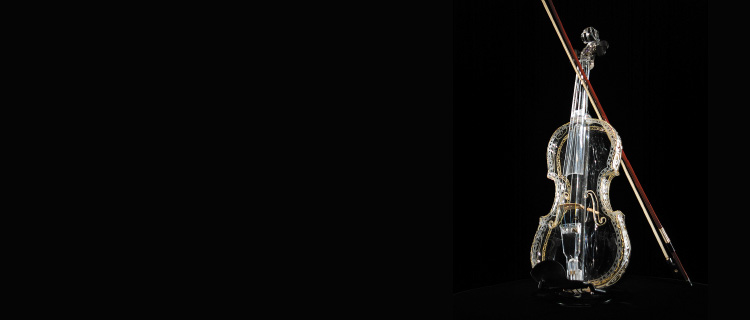
Glass musical instruments
CRAFTMAN SHIP
In 2003, HARIO completed the world’s first glass violin,
the Hario Violin.
Its creation was made possible by the expert manual glassblowing of a skilled craftsman
and the unique properties of HARIO heatproof glass.
Perfecting the soft curves with thin and uniform glass required much trial and error.
Moreover, the sides of this masterpiece were beautifully decorated with engravings and painted details.
HARIO also completed a glass cello in 2004 and a glass harp (Guzheng, 21 strings) — the world's first glass harp and largest instrument made from hand-blown glass — in 2007.
These instruments symbolize the vast potential of HARIO heatproof glass, which is made from 100% pure and natural earth-friendly material.
-
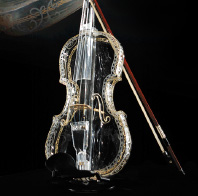
Glass Violin
-
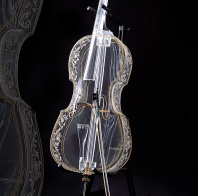
Glass Cello
-
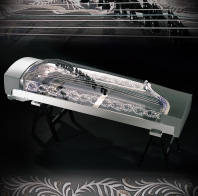
Glass Koto
(Japanese harp) -
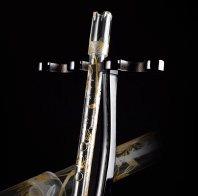
Glass
Shakuhachi -
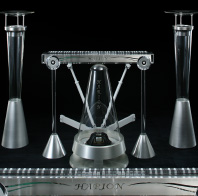
"Harion" glass
cone speaker
system -
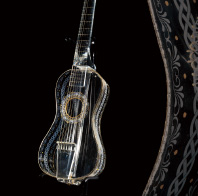
Glass Guitar
-
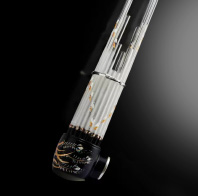
Glass Sho
(mouth organ)
Glass Violin
-
The world's first glass violin
Glass Violin
-
Creation of the world's first glass violin, the Hario Violin, required our most sophisticated glass craftsmanship technology. We conceived the idea in collaboration with violinist Ikuko Kawai and produced the violin at our Koga Factory in Ibaraki Prefecture. We molded twenty violins during the prototype stage and completed the last two, which weigh about 1,380g each (versus around 800g for a wooden violin). One Hario Violin is kept by Ikuko Kawai for musical performances, while the other is kept at the HARIO Head Office. The Hario Violin has a distinctive tone that differs from wooden violins, depending on the pitch, due to differences in resonance.
Material:Heatproof glass (borosilicate glass)
Weight:Approx. 1.38kg (versus 0.8kg for a wood violin)
Announcement:December 9, 2003

-
Glass violin creation process
Glass Cello
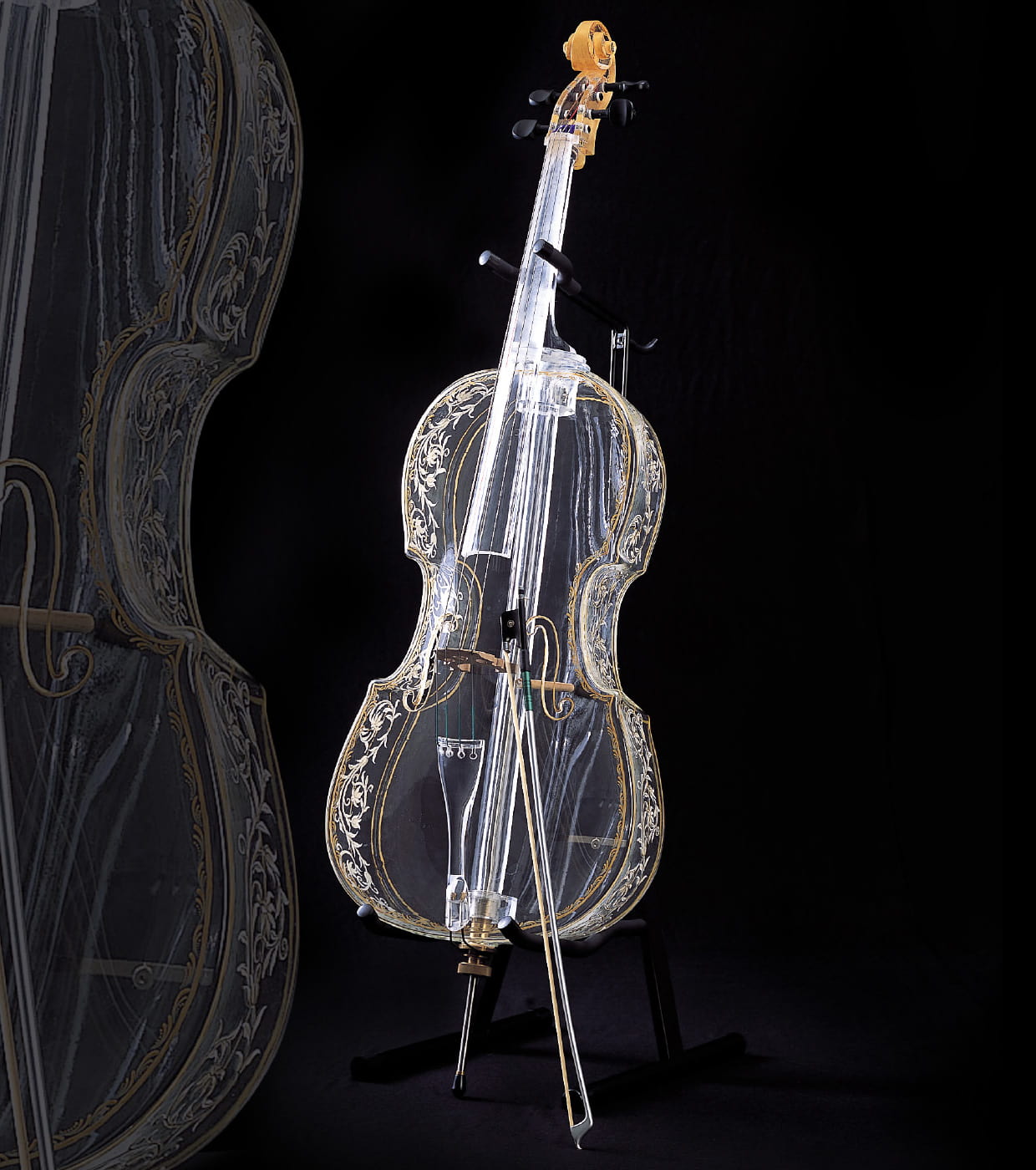
-
Our second world's first!
Glass Cello
-
After making the glass violin, we considered other combinations of technology and art and decided to leverage our best technology to complete the world's first glass cello. The basic production process was the same as for the violin, but the much larger size made the cello more of a challenge. Through trial and error, we molded over 40 bodies before finally completing a single glass cello. Made of heatproof glass, the Hario Glass Cello weighs around 11kg (versus approx. 3kg for a wooden cello).
With completion of the cello, violin and later viola, a string quartet could play all-glass instruments and explore new sound possibilities.Material:Heatproof glass (borosilicate glass)
Weight:Approx. 11kg (3kg for a wooden cello)
Announcement:December 14, 2004
-
Glass cello creation process
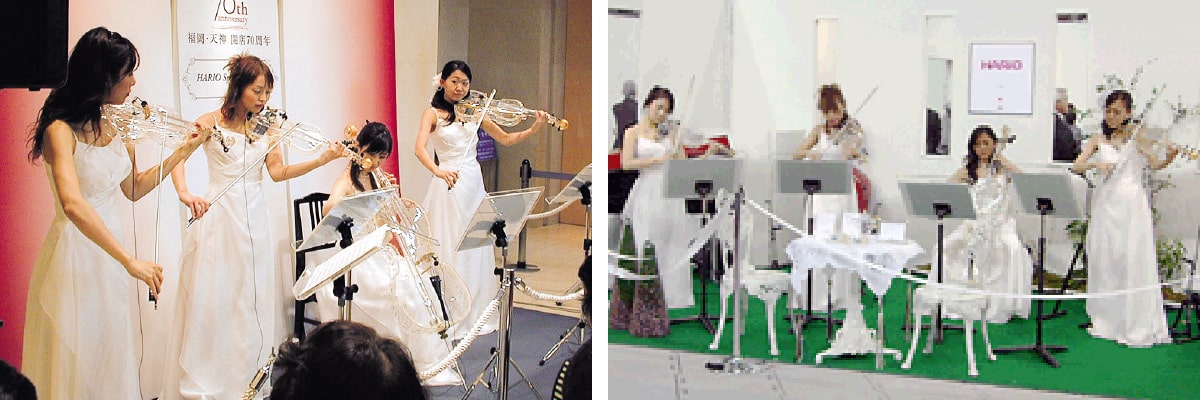
Glass Koto (Japanese harp)
-
The world's first glass koto and largest glass instrument
Glass Koto (Japanese harp)
-
The world’s first glass koto is also the world's largest manually handblown glass instrument. It took 20 staff members to create this basic 21-string koto (guzheng) from heatproof glass made of 100% natural, earth-friendly material. A skilled glassblower shaped the body of the instrument from furnace-melted glass at the end of a stainless-steel blowpipe using breath control. Reproducing the soft curves of the instrument from thin uniform glass was a challenge even for a master craftsman and required much trial and error.
- Weight:
- Approx. 70kg (5kg for a wooden koto)
- Material:
- Heatproof glass (borosilicate glass)
- Dimensions:
- 450mm (H) x 1500mm (W)
- Height:
- 355mm (glass body)
- Production period:
- 13 months
- Announcement:
- November 2006
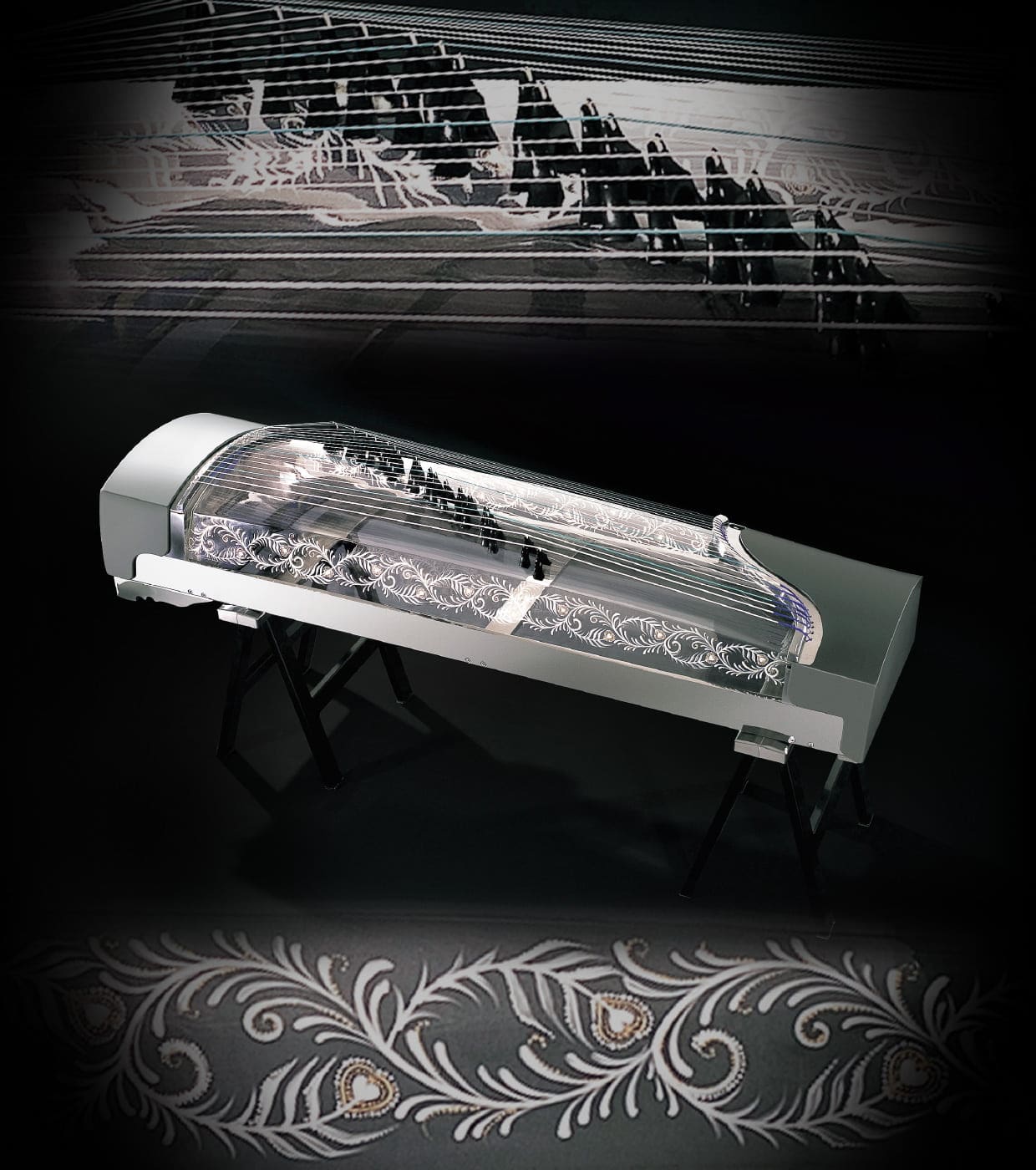
-
Glass koto creation process
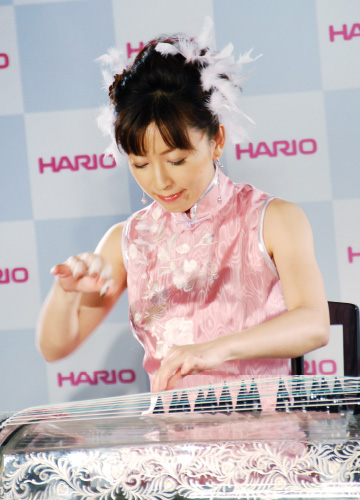
Biography of Chinese guzheng player and composer Woo Fan
-
Born in Shanghai, China
Woo Fan came to Japan in July 1990 after graduating top of class from Shanghai Music School, which is widely considered the most challenging school in China. She released her debut album 'Soshin' (Toshiba EMI) in September 1996 and helped pioneer the current Chinese musical instrument boom in Japan. In addition to numerous TV and radio appearances, she collaborated with Ikko Furuya in a reading in 2002 and performed in Kyogen and Ningyo Joruri Bunraku theater productions. Her more ambitious activities include performing for the Crown Prince and Crown Princess. Currently, she is playing not only Chinese classics and contemporary tunes, but music in various genres. She is also composing music for herself and other artists.
Woo Fan Official Website
Glass Shakuhachi

-
Bringing glass alive
Glass Shakuhachi
-
We created a glass shakuhachi with the goal of honing and passing on our finest glass craftsmanship. This crystallization of quality workmanship was handmade by eleven skilled artisans over a period of three months using traditional techniques. Made of heatproof glass, the glass shakuhachi is lighter than a wooden shakuhachi and maintains a stable pitch regardless of temperature. Craftsmen under the supervision of a player also carefully adjusted the shape of the cylinder, size of the finger holes and angle of the mouthpiece. The glass creates a unique sound, but we made sure it reproduces the depth of sound of a wooden shakuhachi.
- Weight:
- Approx. 253g with 1 shaku and 6 sun (298g with 1 shaku and 8 sun)
- Dimensions:
- Approx. 49cm in length and 26mm-33.5mm in outer diameter
(20mm inner diameter) with 1 shaku and 6 sun
Approx. 55cm in length and 26mm-33.5mm in outer diameter
(20mm inner diameter) with 1 shaku and 8 sun - Material:
- Heatproof glass (borosilicate glass)
- Production period:
- Three months from September 2007
(conceived in October 2006, announced in November 2007)
Glass Japanese instruments
-
In 2010, we created traditional Japanese drums (small and large) and flutes made of glass. Since the sound quality of the drums differed greatly depending on the design of the leather on the left and right sides, we tested several variations to achieve the best sound quality. Please enjoy the special sound quality and beauty of glass Japanese instruments.
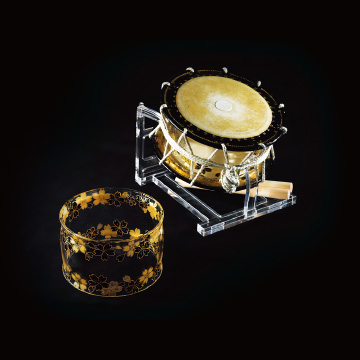
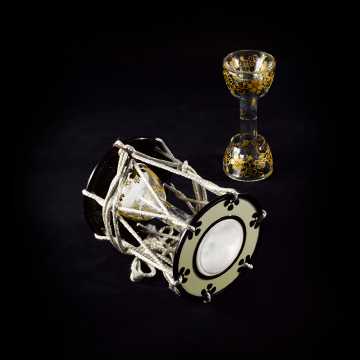
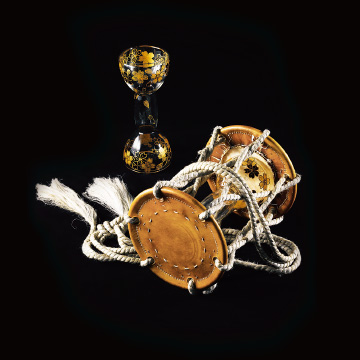

"Harion" glass cone speaker system
-
A shining example of craftsmanship.
"Harion" glass cone speaker system
-
We created a “Harion” glass cone speaker system with the goal of honing and passing on our finest glass craftsmanship. It features the world's first heatproof, hand-blown glass speaker cones (patent pending). We conceived the idea while creating glass musical instruments and hoped it would produce sound extremely faithful to the original recording.
- Weight:
- Approx. 50kg subwoofer and 30kg mid-range speaker pair
- Material:
- Borosilicate glass enclosure, aluminum base
- Cone (diaphragm):
- Borosilicate glass
- Dimensions:
- φ60cm x H100cm subwoofer, φ40cm x H150cm mid-range speaker
- Production period:
- 3 years and 8 months from April 2005
- Announcement:
- November 2008

-
Harion glass cone creation process 1
-
Harion glass cone creation process 2
Glass Guitar
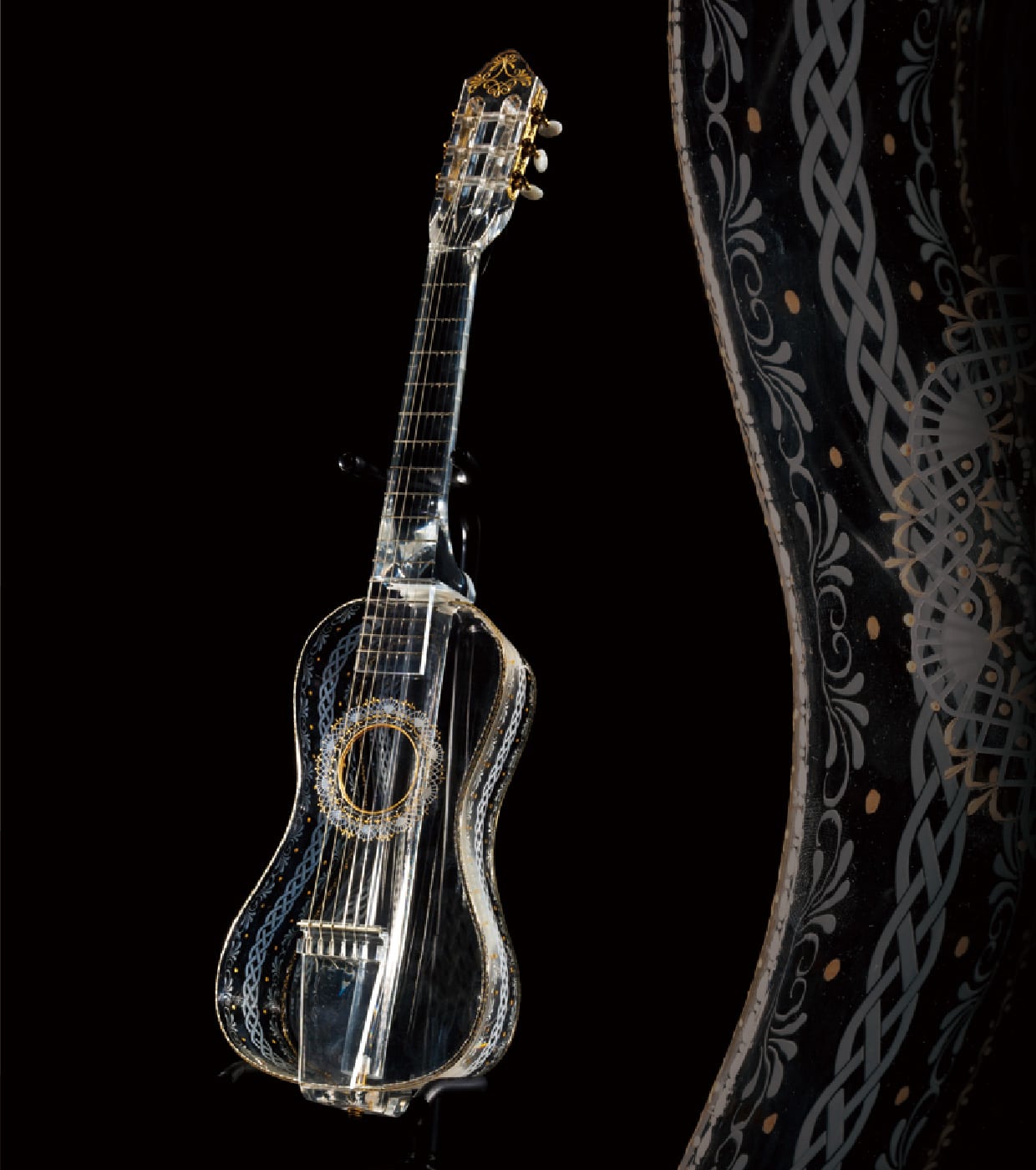
-
The world’s first glass classical guitar
Glass Guitar
-
This glass guitar was created to commemorate recovery from the March 11, 2011 earthquake in Japan. It’s the world's first performance-ready glass classical guitar and was created by 10 skilled craftsmen at a total production cost of around 10 million yen. While based on a European model from the 19th century, the body is somewhat smaller. Glass thickness ranges from 2.5 to 3.0mm and total weight is around 3.7kg. Hand-painted decoration and a delicate design bring out the beauty of the glass. We began molding the glass in September 2011 and then spent about a year adjusting the acrylic neck and sound before achieving success in October 2012. Tuning was supervised by popular guitarist Kaori Muraji to achieve a new, enjoyable sound that is different from wooden guitars.
- Body:
- Heatproof glass
- Neck:
- Acrylic
- Weight:
- Around 3.7kg
- Announcement:
- November 2012
-
Glass guitar creation process
Glass Sho (mouth organ)
-
Fusing 1,400 years of history with 21st century technology
Glass Sho (mouth organ)
-
We created a Glass Sho (mouth organ) with the goal of honing and passing on our finest glass molding and processing technology. This ancient traditional court musical instrument, a forerunner of pipe organs, was chosen because HARIO is a Japanese company that strives to deliver Japanese quality and hospitality to the world.
Production of the glass sho involved 40 people and was supervised by Hideki Togi, a renowned Japanese classical musician. The instrument is the same size as a traditional bamboo sho, but creates a somewhat different sound due to its glass construction. An LED was added to express the concept of light coming from heaven.- Weight:
- 350g (390g with LED unit)
- Size:
- 73mm (W) × 92mm (D) × 470mm (H)
- Material:
- Heatproof glass
- Announcement:
- November 2015
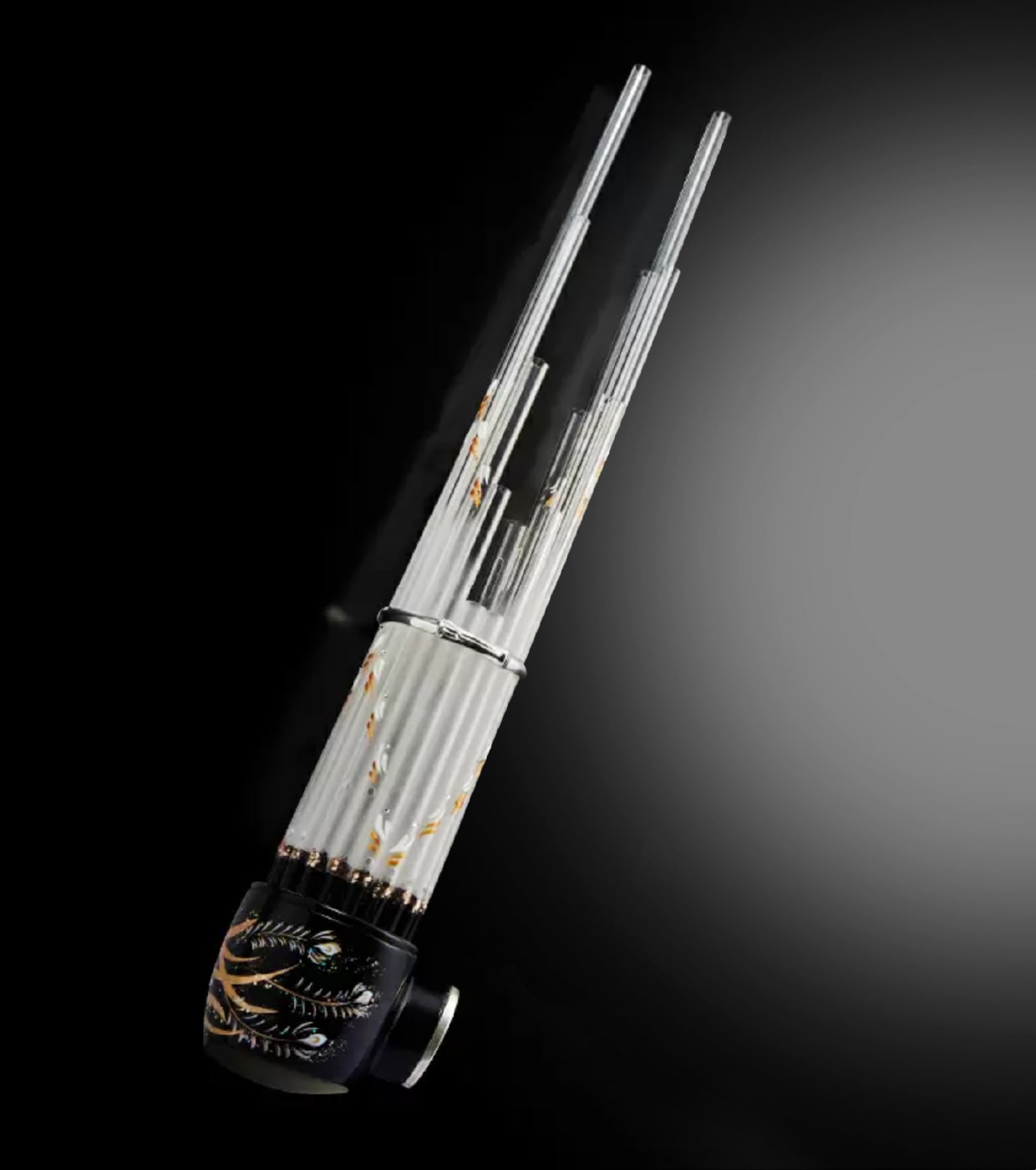
-
Glass sho creation process
Three glass pipes
-
Dragon flute 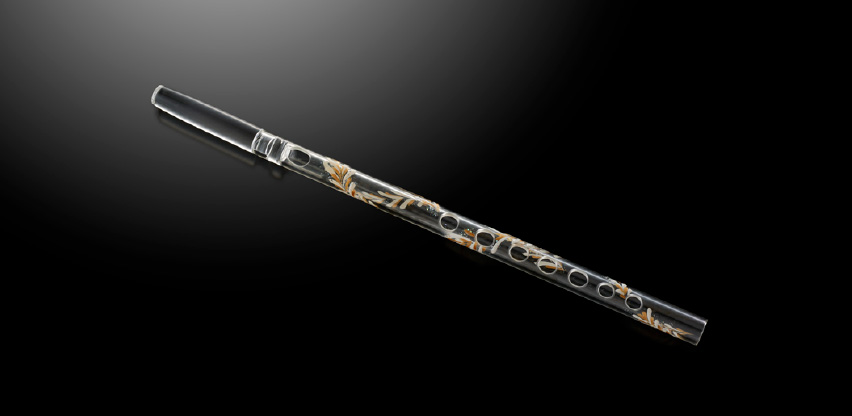
Hichiriki flute 
Glass sho creation video




